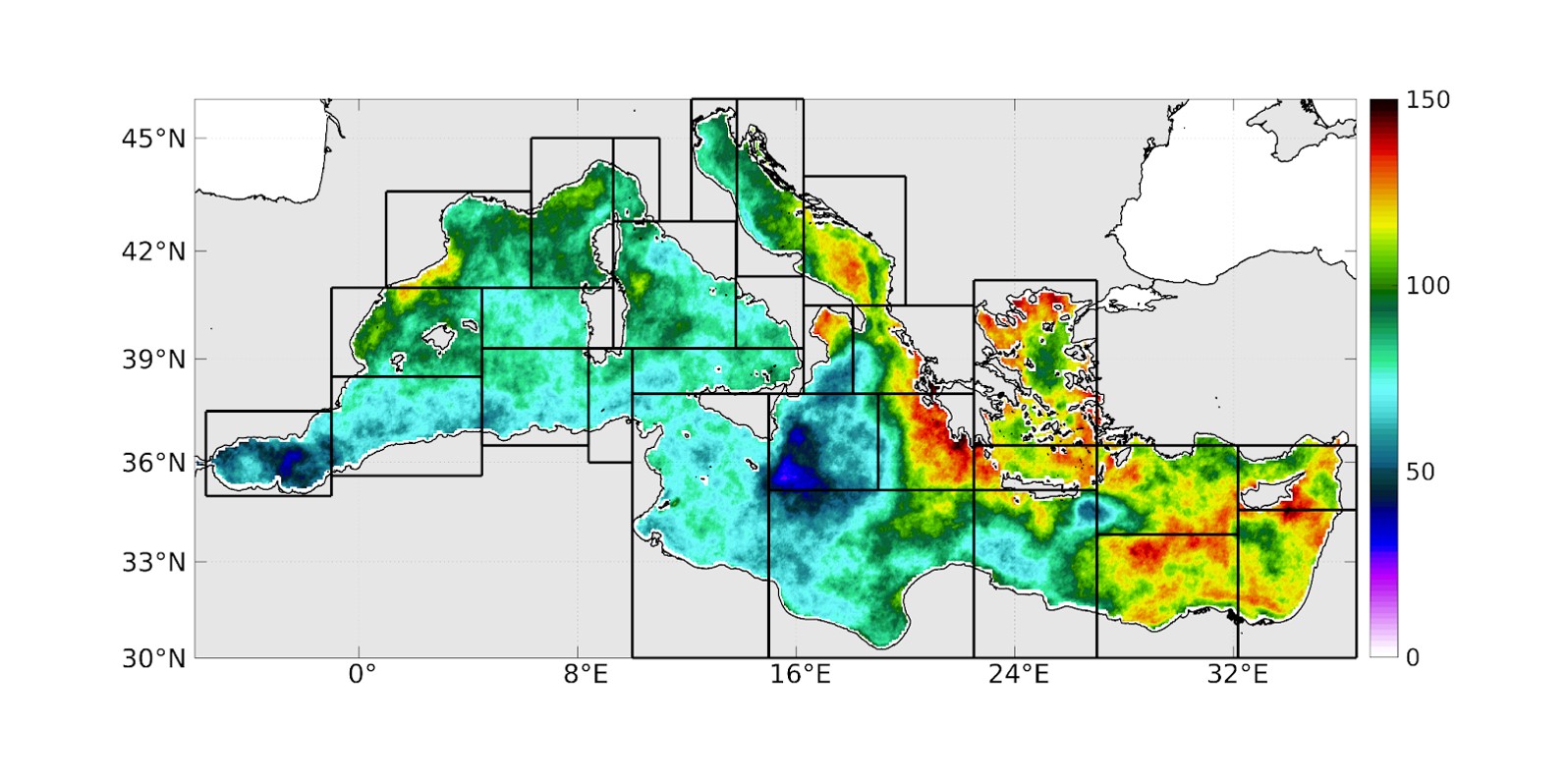Marine heat waves are increasing in the Mediterranean Sea, according to a study from SOCIB
-
In the Mediterranean Sea, marine heat waves have substantially increased in intensity, duration and frequency, and even more in the coastal areas.
-
The open access application Sub-regional Mediterranean marine heat waves, developed at SOCIB, provides continuous and timely information on marine heat waves in the different sub-regions of the Mediterranean Sea from 1982 until now and in real time.
-
This smart platform, combined with predictive capabilities, will help to establish mitigation strategies, in line with the Intergovernmental Panel on Climate Change (IPCC).
Heat waves caused by climate change are now well referenced in both the media and scientific community, and through reports from international groups of experts (Sixth Assessment Report from IPCC, First Mediterranean Assessment Report by MedECC). These atmospheric events correspond to extreme warm air temperatures during prolonged periods (from several days to several weeks). In recent years, the concept of heat waves has been extended to the marine environment. Marine heat waves occur when ocean temperatures are extremely warm during at least five consecutive days. Although marine heat waves have been relatively recently addressed, ocean data now enable us to establish long-term trends in marine heat wave characteristics at sub-regional scale and to better understand the drivers, mechanisms and consequences, such as the impacts on marine ecosystems, oceanic circulation and climate.
Through the study “Sub-regional marine heat waves in the Mediterranean Sea from observations: long-term surface changes, sub-surface and coastal responses”, recently published Frontiers in Marine Science by researchers of SOCIB, increasing trends in marine heat waves intensity, duration and frequency have been observed in the different sub-regions of the Mediterranean Sea. Using multi-platform observations, the propagation of sub-regional MHWs into the ocean interior as well as the ocean response in the coastal environment have also been addressed.
Long-term surface evolution (1982-2020)
Marine heat wave indices have been defined to estimate long-term changes in marine heat wave characteristics: the intensity (in ºC, above the threshold fixed to define extreme values), duration (in days) and frequency (number of events). All sub-regions are experiencing increasing trends over the period 1982-2020 with values ranging over 0.24-0.52ºC for mean intensity, 1.03-2.13ºC for maximum intensity, 5-12 days for mean duration, 4-7 events for frequency and 55-126 days for total days (Figure 1).
Figure 1. Linear trend over the period 1982-2020 of marine heat wave total days. Link.
“Long-term trends over the last four decades have been observed in the Mediterranean Sea: marine heat waves are more frequent, more intense and longer”, says Mélanie Juza, principal author of the study. Comparing the last four decades, the mean values through the sub-periods increase in the different sub-regions of the Mediterranean Sea. The sub-regional values of annual mean and maximum intensities of marine heat waves are much higher during the two last decades (2002-2011 and 2012-2020) than the two first ones (1982-1991 and 1992-2001). More precisely, the sub-regional maxima of the annual mean intensity are found in the western Mediterranean and Adriatic Sea during the decade 2002-2011 due to the extremely warm and long-duration event in 2003 in these sub-basins. Otherwise, the last decade is the sub-period when the annual mean intensities are the largest in the eastern Mediterranean and the maximum intensities are the highest in all the sub-regions of the Mediterranean Sea. The four sub-periods comparison also highlights the increase of duration and frequency of marine heat waves over the last four decades from 1982 to 2020 and the strong acceleration rate in the last decade when the mean duration and number of events are much higher in all sub-regions than during the three previous decades (see Figure 2).
Sub-surface propagation and coastal response
The propagation in depth of the sub-regional marine heat waves has also been analyzed, highlighting its seasonal and spatial variability. The resulting strengthening in upper-ocean density stratification will act as a barrier between the surface and deep water masses - modifying the ocean circulation and preventing the ocean ventilation -, and between the nutrient-poor surface and nutrient-rich subsurface waters - impacting directly the oceanic biological activities.
Finally, “marine heat waves have higher occurrence and maximum intensity in near-shore than off-shore areas” says Ángels Fernández-Mora, co-author of the study. The local surface and subsurface responses in near-shore environments may differ and strongly depend on the local geographic, meteorologic and oceanic features.
In conclusion, as explains Joaquín Tintoré, director of SOCIB, “it is crucial to foster the continuous monitoring of the Mediterranean Sea, to improve numerical modeling and prediction and to facilitate access to ocean information for all stakeholders in order to implement strategy for a better coastal adaptation and management in a context of climate change”. In this sense, the emerging risks from marine heat waves have to be investigated to develop and establish adaptation strategies.
Web-based visualization tool
To respond to the needs of mitigation and extreme event predictability (IPCC, Sixth Assessment Report), SOCIB has implemented a smart platform in open access Sub-regional Mediterranean marine heat waves to monitor and visualize timely information on sub-regional marine heat waves in the Mediterranean Sea. This application enables the detection of marine heat waves in real time using satellite observations and with 10-days predictability using model forecasts, as well as the monitoring of long-term variations in response to global warming (from 1982 to present). This application has been enabled by the Copernicus Marine Service which provides full, free and open access to quality-controlled historical and near-real time data. This user-friendly portal has been designed to be consulted by diverse stakeholders, including the scientific community, educators in marine science, environmental agencies and policy decision-makers among diverse ocean stakeholders.
Reference article
- Juza, M., Fernández-Mora, A., and Tintoré, J. (2022). Sub-regional marine heat waves in the Mediterranean Sea from observations: long-term surface changes, sub-surface and coastal responses, Frontiers in Marine Science, 785771, https://doi.org/10.3389/fmars.2022.785771









